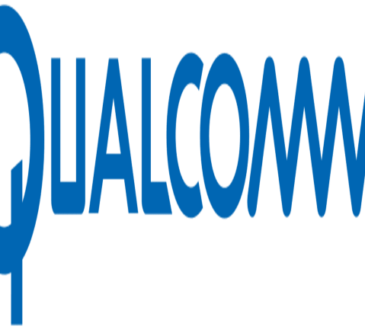
By Donny Jackson
FirstNet Authority board members recently voted unanimously to fund the completion of the FirstNet system’s ability to deliver full 5G services to public-safety subscribers, although the exact amount of the investment and an implementation schedule were not shared immediately.
“This investment will evolve FirstNet to full 5G capabilities and set us on a path to deliver mission-critical 5G services for FirstNet subscribers,” FirstNet Authority board Chair Richard Carrizzo said during a special virtual meeting of the board and its Finance and Investment Committee.
“This is an excellent and exciting time at the Authority, as we are in a new phase for the network. We are moving forward to expand and enhance the network, based on public safety’s evolving needs and operations. Today’s meeting is a major step in that direction.”
During the meeting, board members approved two resolutions. Resolution 116 stipulates that the First Responder Network Authority (FirstNet Authority) investment fund will more than double during fiscal year 2024, to US$546.57 million. To reach this total, the resolution states that the FirstNet Authority anticipates collecting US$285.69 million—“inclusive of additional recoveries from fiscal year 2023,” according to board member Jocelyn Moore—that will be added to the existing US$260.88 million in the investment fund.
Resolution 117 directs the FirstNet Authority staff to take “take all actions necessary” to provide a “network-evolution capability” and obligate the appropriate funding during the current fiscal year.
Both resolutions were approved unanimously.
Exactly how much investment money will be spent to ensure that FirstNet can provide full 5G functionality was not disclosed, but a FirstNet Authority spokesperson informed IWCE’s Urgent Communications that the implementation is expected to take multiple years.
FirstNet Authority Executive Director and CEO Joe Wassel said the resolutions represented more than two years of work and “thousands of staff hours” by the organizations employees. Wassel also noted that the investment marks the first step into “FirstNet 3.0”—a concept shared initially in a column published by IWCE’s Urgent Communications.
“This is an amazing day for the FirstNet Authority, the board, all of our stakeholders, and the 5.5 million customers that we have across the area of responsibility—from Guam in the Pacific, all the way over to the Virgin Islands,” Wassel said after the board approved the resolutions.
“I can’t overstate how excited the entire team is to take these resolutions and to get into FirstNet 3.0 … This is just the beginning, and there’s so much more to do. We’re excited about what’s next.”
Carrizzo echoed this sentiment.
“This is major, and we are excited to keep doing what we’re doing for public safety,” Carrizzo said to conclude the FirstNet Authority board meeting.
President of AT&T’s FirstNet unit, Jim Bugel,expressed optimism about the FirstNet Authority board’s decision to invest in the ongoing evolution of the FirstNet system, which provided more than 5.5 million connections to about 27,500 public-safety agencies when 2023 ended, according to AT&T.
“We are proud to work alongside the First Responder Network Authority to deliver FirstNet and serve the public-safety community across the country,” Bugel said in a prepared statement provided to IWCE’s Urgent Communications.
“This investment is an important milestone and accelerates the future evolution of public safety’s network following the initial buildout. AT&T is focused on innovation and growth for the FirstNet network and will continue to bring advanced solutions and expanded coverage to first responders.
FirstNet Authority board members completed the investment vote just six weeks after the FirstNet Authority validated AT&T’s completion of the initial five-year nationwide buildout on 700 MHz Band 14 spectrum licensed to the FirstNet Authority. During today’s board meeting, Carrizzo described this initial buildout as “quite an achievement—it was done on time, on budget and on task.”
In 2012, Congress allocated US$7 billion to the FirstNet Authority, which was a massive figure for public-safety communications but only a fraction of the US$50 billion to US$80 billion some estimated a new commercial nationwide LTE network would cost—much less a system with additional coverage needed by public safety.
Congress also directed the FCC to license 20 MHz of 700 MHz spectrum—now known as Band 14—to the FirstNet Authority, which proved to be critical in the NPSBN business model.
In 2016, the FirstNet Authority offered up to US$6.5 billion and access to the Band 14 spectrum to bidders willing to build and maintain a nationwide public-safety LTE network for 25 years. Notably, the RFP document included a significant financial wrinkle—the winning bidder would pay annually for access to the 700 MHz Band 14 airwaves, providing the FirstNet Authority with a steady stream of revenue throughout the life of the 25-year contract that is scheduled to end in March 2042.
Three entities submitted bids, and AT&T formally was announced as the contractor in March 2017, although AT&T had been identified in legal documents as the apparent winner several months earlier.
In its bid, AT&T agreed to pay the FirstNet Authority US$18 billion for its access to the Band 14 spectrum throughout the 25-year contract period. About US$3 billion of that money is expected to fund the FirstNet Authority’s ongoing operations, so the FirstNet Authority board ultimately is expected to have about US$15 billion in available funds that it must invest into improving the NPSBN—as approved today, for example—before the contract expires in 2042. To date, the FirstNet Authority has spent less than 5 per cent of these discretionary investment funds.



